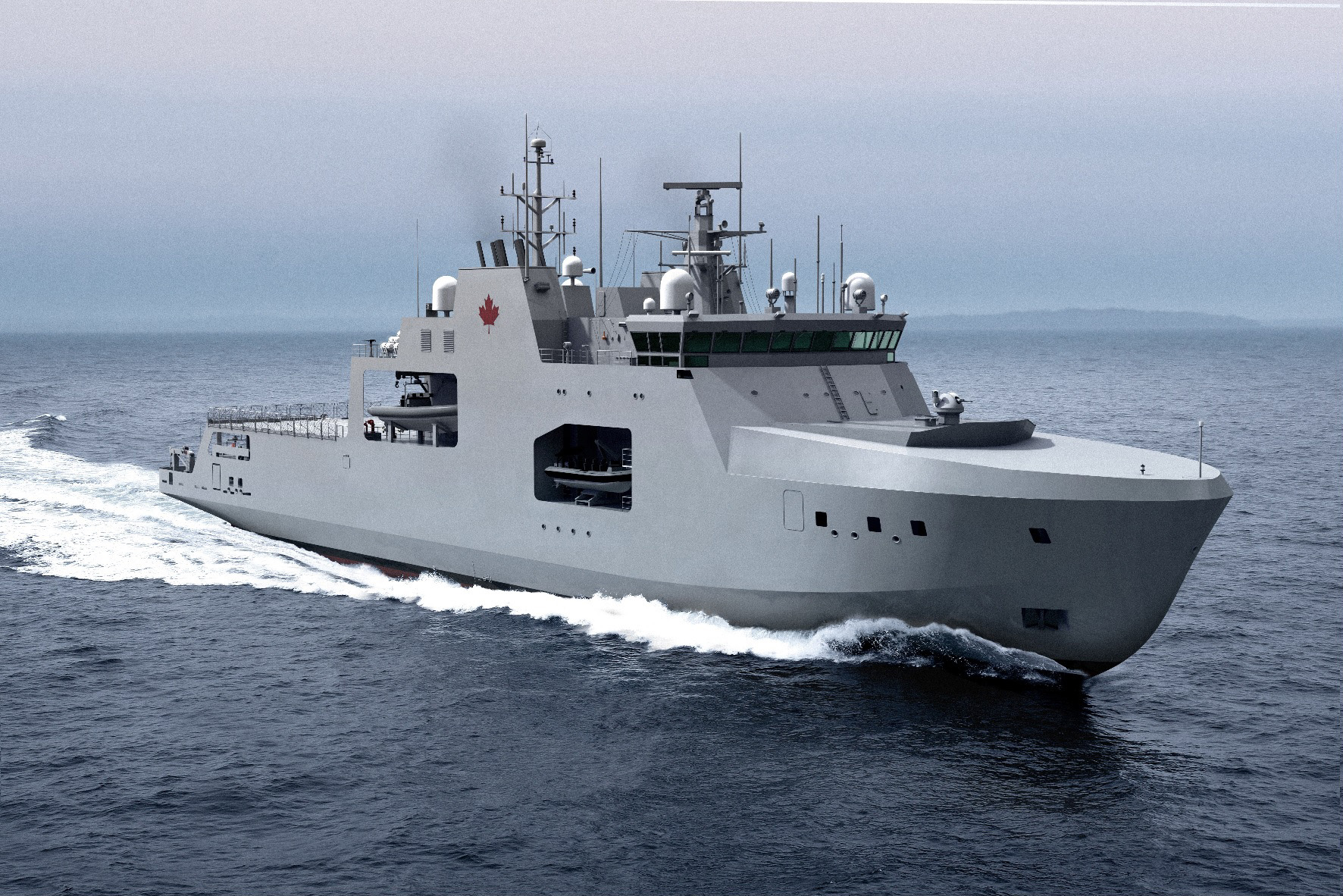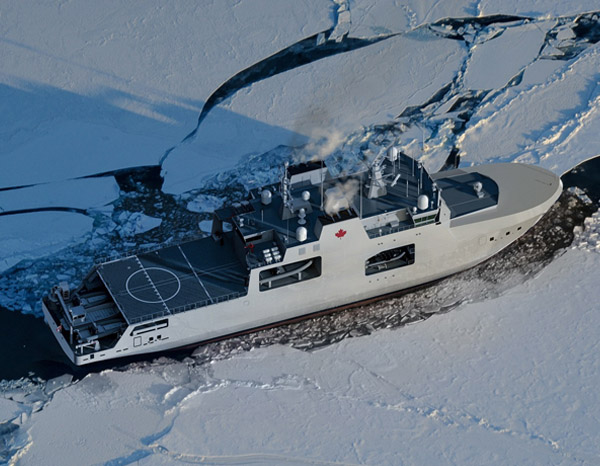
The Canadian government commissioned six Arctic offshore patrol ships for the Royal Canadian Navy. The first two are under construction in Halifax. [Artist’s impression/RCN]
Its landmass, including the world’s largest supply of freshwater, totals almost 10 million square kilometres, number two in the world, and the waters within Canada’s economic purview encompass parts of three oceans, totalling 2.9 million square kilometres.
The grand scale of Canada, its geographic diversity and hinterlands, form the fabric of the Canadian identity. From the fiords, beaches and rocks of Atlantic Canada to the lakes and rolling prairies of Manitoba and Saskatchewan, the mountainous coast of British Columbia, and the barren cold and stark beauty of the High Arctic, they all embody untold wealth and are a common and unifying source of national pride.
So you’d think ships and airplanes would be priorities in Ottawa, not only for defence but for sovereignty’s sake, from sea to sea to sea.
Maintaining and retaining such coveted territory demands commitment and diligence. Yet Canada has no icebreakers capable of navigating Arctic waters year-round. It has never had submarines capable of patrolling beneath the Arctic Ocean ice. Diminishing resources and ongoing international commitments leave its naval fleet barely able to maintain a significant presence off the east and west coasts.
The Canadian military is still flying half-century-old Sea King maritime helicopters; the process to replace them has been going on since 1983 and it appears it won’t be completed until the mid-2020s.
The point here isn’t Canada’s international commitments, which are many and critical to the country’s credibility and standing in the world. The point is something more fundamental—sovereignty.

Names for Canada’s new icebreakers include Her Majesty’s Canadian ships Harry DeWolf, Margaret Brooke, Max Bernays, William Hall, Frédérick Rolette and Robert Hampton Gray. [Artist’s impression/RCN]
Hans Island is disputed territory, falling as it does within the 12-nautical-mile territorial waters of both Canada and Denmark.
In 1984, Canadian troops planted a Maple Leaf flag and left a bottle of Canadian whisky on Hans Island. A week later, a Danish official replaced the flag with Denmark’s and the whisky with a bottle of Danish brandy. He added a note welcoming visitors to Denmark. Except for a brief spat over an unannounced visit by Canada’s defence minister in 2005, that’s pretty much how it’s gone ever since. Would that all territorial disputes be conducted with such levity and diplomacy.
But there are serious undertones to the good-natured dispute. Hans Island’s significance lies in the context of the world’s changing climate. Scientists say the Arctic is warming at twice the rate of the planetary average. Melting ice is opening the legendary Northwest Passage and other areas to year-round navigation and exploration.
In other words, Hans Island and the Nares Strait in which it lies are likely to become a lot more strategic, and busy. And it is inevitable that Arctic sovereignty will become more critical and more vulnerable. So what is Canada doing about it?
Certainly, Canada is at the forefront of mapping the Arctic sea floor. It has taken a leadership role in the increasingly important field of Arctic science. But Canada’s actual Arctic presence has always been tenuous.
Its 5,000-member Northern Rangers force is a source of pride but in the greater scheme of things its practical value is limited. Except for periodic exercises, Canada’s military role north of 60 is, for all intents and purposes, negligible.
Consider Russia, which in 2015 went to the United Nations and launched a claim to 1.2 million square kilometres of the continental shelf under the Arctic Ocean. Canada, the United States, Denmark and Norway are also seeking jurisdiction over parts of the Arctic, believed to hold up to a quarter of the planet’s undiscovered oil and gas.
Moscow dispatches regular patrols above and below the Arctic ice. It will commission the world’s largest icebreaker, the 173-metre Arktika, in 2019. And, gimmicky as it may be, Russian divers have actually planted flags on the sea floor at the North Pole, long assumed—by Canadians, at least—to be Canadian territory. Only the United States, not Canada, rivals Russia’s continuous military presence in the High Arctic.
In October, the Liberal government made its first major statement on Arctic policy, moving away from its predecessor’s more confrontational approach in favour of a rapprochement with Russia. This despite friction over Moscow’s aggression in Eastern Europe, its indiscriminate bombing in Syria and its provocations in the Arctic.
Last month, the federal budget stripped $8.4 billion from the military equipment budget. It promised to restore the funding over 20 years, but was vague on specifics. Badly needed equipment upgrades and purchases hang in the balance.
Never mind international commitments. Such policies don’t bode well for Canadian sovereignty.
Advertisement






















